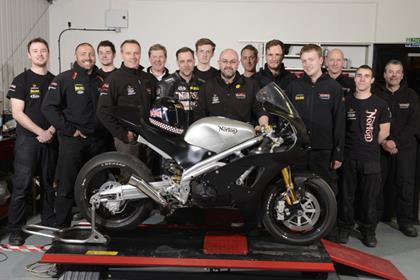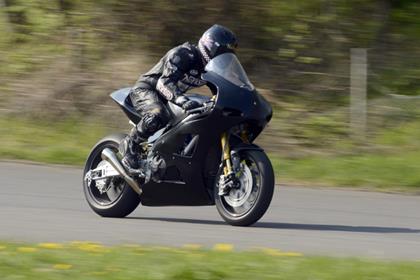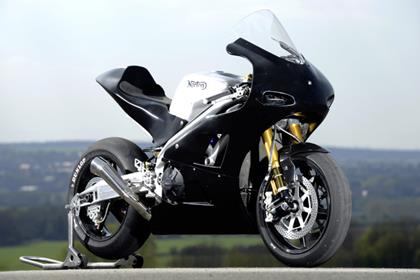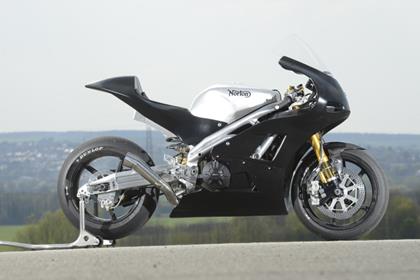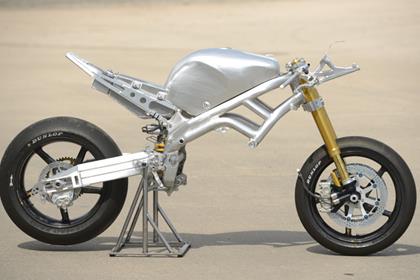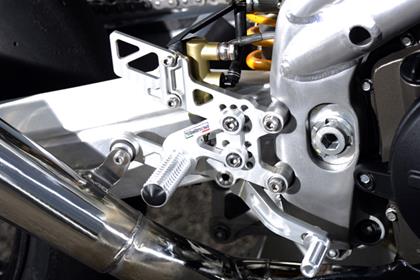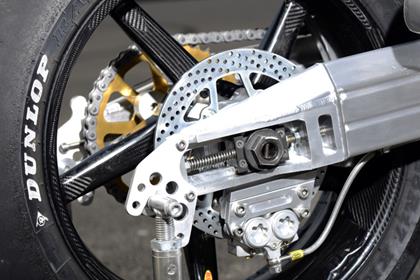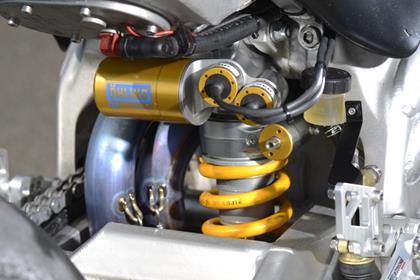Norton V4 tech analysis
Norton was brought back into British hands in 2009. After tqo previous attempts, Norton is back at the TT in just a few weeks with two almost completely new 1000cc V4 bikes, two riders and a bundle of determination to make this the start of a new racing era for the firm. Here’s the technical lowdown on the new bike.
Ram-air scoops
Redesigned from last year with new twin ram-air scoops mounted either side of the front of the fairing.
While they’re not as good as one large central duct, they are a lot more efficient at getting air into the airbox than last year’s bike, which had one central scoop and two additional ones on the top of the fairing cowl. Note the enormous screen bubble.
Aerodynamics
A lot of work has been done on the fairing to improve aerodynamics, engine cooling and also to provide more wind protection for the riders. Last year, Ian Mackman was having to slow down so he could see where he was going because the fairing wasn’t big or tall enough, and he was being battered and exhausted by the wind-blast.
Brakes
New for the 2013 bike are Swedish-made ISR brakes, which have enormously powerful six-piston calipers at the front with a pair of 320mm discs. These replace the Brembos used on the bike last year.
At the back is a 260mm disc with a four-piston caliper. The range of adjustability in the ISR units is wide (see detail picture 3, right).
Electronics
Cosworth developed this dashboard for F1 but it has been tailored for bike applications. It uses bespoke Norton electronics that control everything from the ride-by-wire throttle to the fuelling, ignition and overall mapping.
The system has the capability for fully integrated traction control software. It’s not going to be used yet – but it does make the system more future proof.
Engine
Essentially this is an Aprilia RSV4 999cc V4 superbike engine making around 200bhp, but Norton has modified and changed an undisclosed number of internals as it seeks to carry on development of its own V4 for the future.
Norton is not releasing any details of the internal changes to the engine, which is managed by their own electronics package.
Chassis
Completely redesigned tubular alloy chassis designed and built with the primary aim of making the bike more adjustable so it can be tweaked to suit the ultra-demanding TT course.
The range of adjustments include including fork offset and ride height.
Suspension
Stonkingly expensive Öhlins FGR forks and shock have electronically controlled valves and hydraulics to operate the active/semi-active suspension. These are essentially the same as those used on MotoGP bikes.
They allow three modes of use, being able to deliver simple old fashioned suspension, semi-active control, or fully active, predictive, damping.
Swingarm
Last year the swingarm wasn’t long enough and the team still hadn’t found a completely stable setting for the bike in terms of overall wheelbase.
This year they’ve added flexibility to the old 580mm swingarm, and now boast a dragbike-rivalling swingarm that gives an extra 50 to 60mm of wheelbase if needed.
